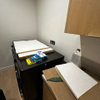Fisher Paykel GWL15 vaporlocking
deaver
14 years ago
Related Stories

SMALL KITCHENSA World Tour of Compact Kitchens
From Austin to Zagreb, these 15 Houzzers make every square foot of their small kitchens count
Full Story
TROPICAL STYLEMy Houzz: New York Chic and Laid-Back Hawaiian Style on Maui
A relocating New Yorker designs an island home influenced by her former city life
Full Story
HOMES AROUND THE WORLDHouzz Tour: A Colorful and Creative Family Home
Reconfiguring the layout and injecting light and color transformed this London space
Full Story
KITCHEN DESIGNA Cook’s 6 Tips for Buying Kitchen Appliances
An avid home chef answers tricky questions about choosing the right oven, stovetop, vent hood and more
Full Story
HOUSEKEEPINGDishwasher vs. Hand-Washing Debate Finally Solved — Sort Of
Readers in 8 countries weigh in on whether an appliance saves time, water and sanity or if washing by hand is the only saving grace
Full Story
KITCHEN DESIGNStay Cool About Picking the Right Refrigerator
If all the options for refrigeration leave you hot under the collar, this guide to choosing a fridge and freezer will help you chill out
Full Story
REMODELING GUIDESWhere to Splurge, Where to Save in Your Remodel
Learn how to balance your budget and set priorities to get the home features you want with the least compromise
Full Story
KITCHEN DESIGNNot a Big Cook? These Fun Kitchen Ideas Are for You
Would you rather sip wine and read than cook every night? Consider these kitchen amenities
Full Story
REMODELING GUIDES10 Design Features to Kick Your Remodel Up a Notch
You’ve done the legwork on your home renovation or new build. Now it’s time to plan your reward
Full Story
LAUNDRY ROOMSClever Ways to Hide a Laundry Station
When you don’t have a whole room to devote to the wash, use these solutions to tuck the machines out of view
Full Story









dadoes
deaverOriginal Author
Related Professionals
Eagle Mountain Kitchen & Bathroom Remodelers · Emeryville Kitchen & Bathroom Remodelers · South Barrington Kitchen & Bathroom Remodelers · Bullhead City Cabinets & Cabinetry · Mount Holly Cabinets & Cabinetry · North Dakota Custom Closet Designers · St. Louis Custom Closet Designers · Saugus Custom Closet Designers · Easton Flooring Contractors · Elkridge Flooring Contractors · Emmaus Flooring Contractors · Lacey Flooring Contractors · Moorhead Flooring Contractors · Pittsburgh Flooring Contractors · Trenton Flooring Contractorsweedmeister
deaverOriginal Author
dadoes
deaverOriginal Author
deaverOriginal Author
dadoes
deaverOriginal Author
deaverOriginal Author
deaverOriginal Author
deaverOriginal Author
dadoes
deaverOriginal Author
dadoes
deaverOriginal Author
dadoes
RoadhouseMike
dadoes